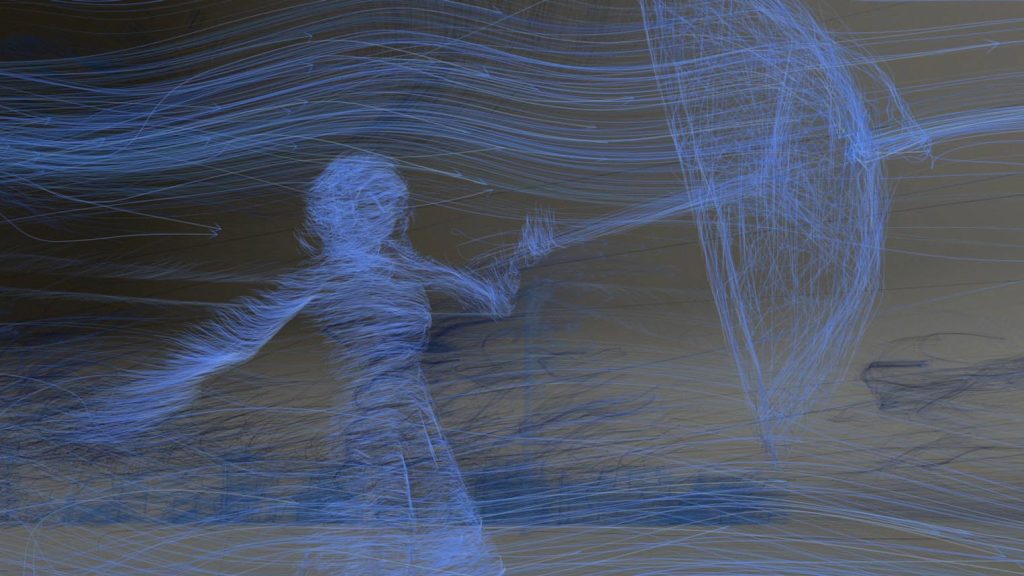
So-called ‘two-dimensional’ art from the twentieth century has often tried to get closer to the object using the imprint of light that any object leaves, if but for a moment, on the surface of the world, or what we call the visible horizon. From Turner to abstract expressionism, artists have been trying to convey the presence of matter using impalpable substance: light, colour, inner conditions. Time and space, in line with physics’ latest discoveries, ended up collapsing in syncretic, thick, simultaneous images where narrative instances appear internalized in compositions that are as immediate in their appearance as they are complex in their conception. An answer to the acceleration of photography, its premonition, or rather, the concept of motion picture as a mobile section of the spacetime.
With immersive art, with the coming of habitable, walkable dimension in the constitutive language of a multimedia work of art, are images going to be merely figurative? Obviously not, which is apparent if we look at the many, mostly abstract works that are an important part of immersive art. Works like Adriaan Lokman’s Flow, which takes a pictorial process that locates shapes in their aero-luminous footprint into a VR experience. We will follow wind in its unpredictable pirouettes along different natural and urban backgrounds. When it meets an obstacle, it gives life to its shape, an expedient that, here, takes a very interesting meta-linguistic connotation. We will be encouraged to reflect on the very nature of digital immersive image.
FLOW
COMPETITION
by Adriaan Lokman
(The Netherlands, France, 15’)